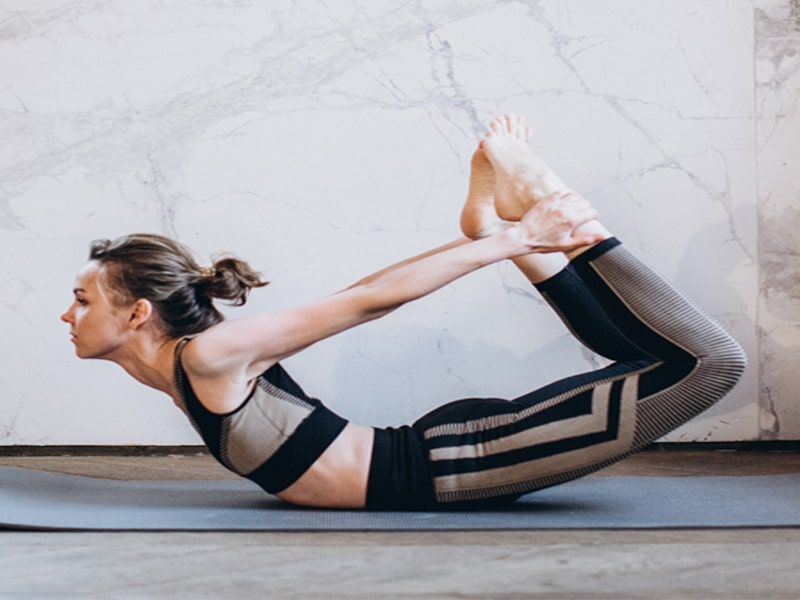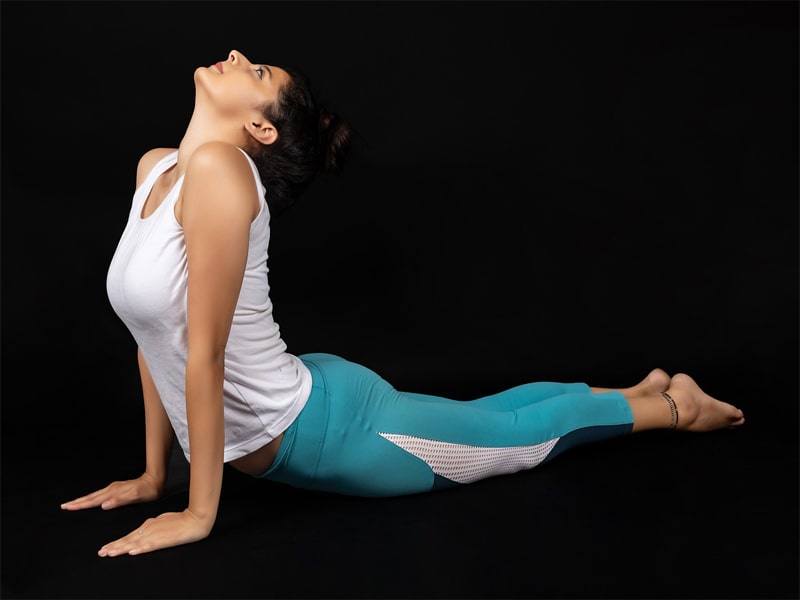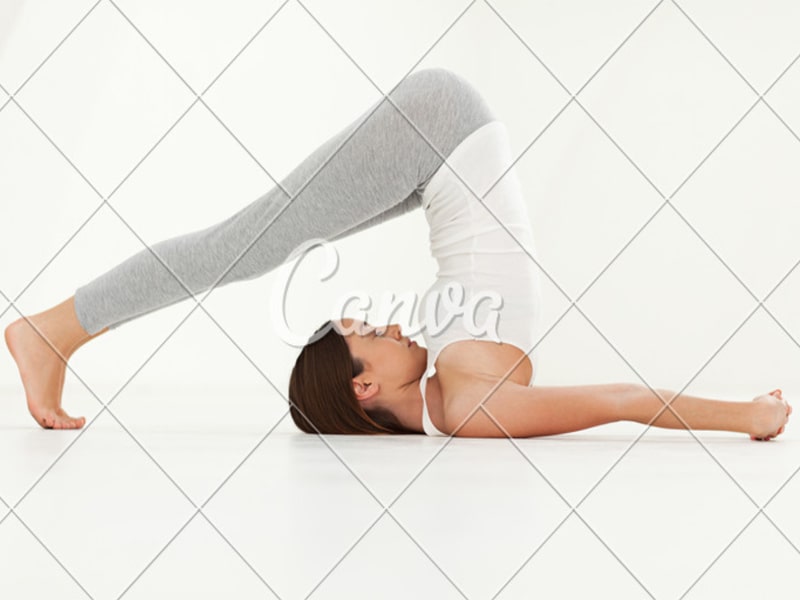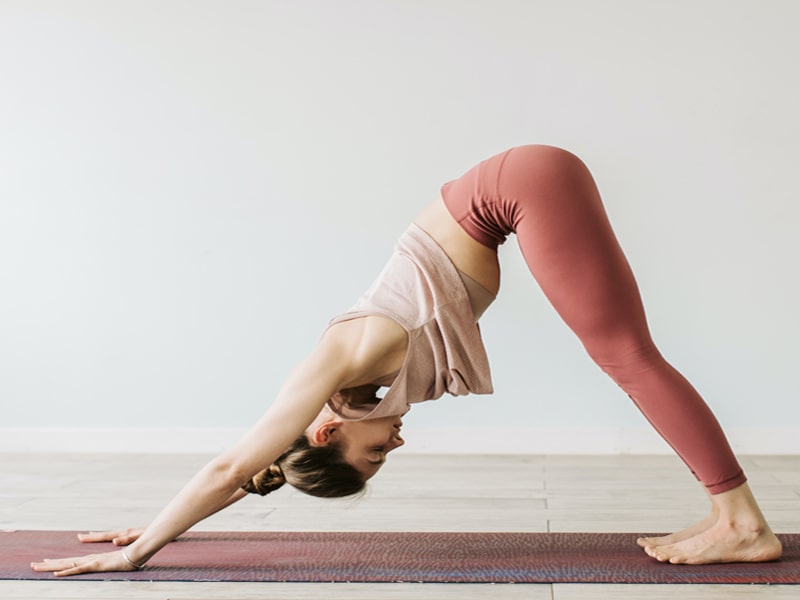Introduction
Dhanur Asana, also known as the Bow Pose, is a dynamic and challenging yoga pose that is both invigorating and rejuvenating. It is a posture that requires strength, flexibility, and balance and offers numerous physical and mental benefits. This pose is often used as a warm-up before a more intense practice, but it can also be practiced on its own as a full body workout.
A. Definition of Dhanur Asana
Dhanur Asana is a Sanskrit term that translates to “Bow Pose.” It is a pose where the body is shaped like a bow, with the arms and legs acting as the bowstring and the torso as the bow. In this pose, the body is stretched from the front to the back and from the side to side, creating a full body workout.
B. History and Origin of Dhanur Asana
Dhanur Asana has been practiced for centuries in India and is part of the traditional Hatha Yoga practice. Hatha Yoga is a style of yoga that focuses on physical postures and breathing techniques to prepare the body for meditation. The Bow Pose is believed to have originated in the medieval period and has been used as a warm-up pose for martial arts and archery.
C. Benefits of Practicing Dhanur Asana
Practicing Dhanur Asana offers numerous physical and mental benefits, including :-
-
Strengthening of the back, arms, and legs
-
Stretching of the abdominal muscles, chest, and neck
-
Improved posture and balance
-
Increased flexibility and range of motion
-
Stimulation of the digestive system
-
Relief of stress and anxiety
-
Improved focus and concentration
Also Read :- Shava Asana – A Complete Guide
Preparation for Dhanur Asana
Before practicing Dhanur Asana, it is important to properly prepare your body and mind. This will help ensure a safe and effective practice.
A. Physical and Mental Preparation
To prepare for Dhanur Asana, it is important to warm up your body with a few gentle stretches and yoga postures. This will help increase your flexibility and prevent injury. It is also important to focus your mind and breathe deeply, as this will help calm your mind and improve your balance.
B. Warm-Up Exercises
Before practicing Dhanur Asana, warm up your body with the following exercises :-
-
Cat-Cow stretch :- On your hands and knees, alternate between arching your back and rounding your spine, moving slowly and smoothly.
-
Child’s Pose :- Kneel on your mat with your toes touching and sit back on your heels. Reach your arms forward and relax your head and neck.
-
Downward-Facing Dog :- From your hands and knees, lift your hips up and back, straightening your arms and legs. Keep your feet hip-width apart and your hands shoulder-width apart.
C. Required Props and Equipment
No props or equipment are necessary for Dhanur Asana, but a yoga mat is recommended to provide cushioning and support for your knees and hands.
Step-by-Step Guide to Dhanur Asana
A. Start Position
Begin by lying flat on your stomach with your arms and legs extended behind you. Your hands should be alongside your hips and your palms facing down.
B. Movement into the Pose
-
Bend your knees and reach back with your hands to grasp your ankles.
-
Inhale and lift your head and chest off the floor, pulling your feet towards your hips and stretching your body like a bow.
-
Keep your arms straight and hold the pose, breathing deeply and steadily.
C. Alignment and Adjustments
It is important to maintain proper alignment while practicing Dhanur Asana. Some tips to help ensure proper alignment include :-
-
Keep your chin tucked in and avoid looking up or down.
-
Keep your arms and legs straight, but not locked.
-
Keep your chest open and your gaze forward.
-
Avoid over-arching your back, as this can lead to injury.
D. Holding the Pose
Hold Dhanur Asana for 5-10 breaths, focusing on your breathing and maintaining proper alignment. If you feel any discomfort or strain, release from the pose and rest.
E. Exiting the Pose
To exit Dhanur Asana, slowly release your ankles and lower your chest and head to the floor. Relax for a few breaths and then move on to the next pose.
Common Mistakes and How to Avoid Them
It is important to avoid common mistakes while practicing Dhanur Asana to ensure a safe and effective practice. Some common mistakes to avoid include :-
A. Incorrect Alignment
Ensure that you maintain proper alignment throughout the pose, keeping your chin tucked in, your chest open, and your gaze forward.
B. Rounding the Back
Avoid rounding your back, as this can lead to strain and injury. Instead, keep your back straight and your chest open.
C. Over-Extending the Arms
Keep your arms straight, but not locked. Over-extending your arms can lead to strain in your shoulders.
D. Improper Breathing Techniques
Focus on your breathing, inhaling deeply and exhaling steadily. Avoid holding your breath, as this can lead to tension and discomfort.
Also Read :- 9 Best Yoga Blocks Brands in Indian Market
Variations and Modifications of Dhanur Asana
A. Beginner Variations
If you are new to Dhanur Asana, try the following modifications to make the pose more accessible :-
-
Use a strap or towel to help reach your ankles.
-
Keep your knees bent and place your hands on your shins or behind your knees instead of reaching for your ankles.
B. Advanced Variations
For more advanced practitioners, try the following variations to challenge yourself :-
-
Try holding the pose for longer, gradually increasing your hold time.
-
Try lifting one leg off the floor while holding the pose.
C. Modifications for Injuries or Limitations
If you have any injuries or limitations, it is important to modify the pose to ensure a safe and effective practice. Some modifications to consider include :-
-
Using a block or blanket to support your chest and head.
-
Keeping your knees bent and placing your hands behind your knees instead of reaching for your ankles.
Incorporating Dhanur Asana into Your Practice
A. As a Warm-Up
Dhanur Asana is a great pose to include as a warm-up before a more intense yoga practice. It helps to loosen up the muscles, increase flexibility, and improve focus and concentration.
B. As Part of a Flow
Incorporate Dhanur Asana into a flow of yoga postures for a full body workout. Flow from one pose to the next, linking your movements with your breath.
C. As a Standalone Pose
Practice Dhanur Asana as a standalone pose for a challenging and invigorating workout. Hold the pose for several breaths, focusing on your breathing and alignment, and then rest before repeating.
D. Combining with Other Poses
Dhanur Asana can also be combined with other yoga postures to create a more challenging and diverse practice. Some complementary poses to consider include :-
-
Ustrasana (Camel Pose)
-
Bhujangasana (Cobra Pose)
-
Setu Bandha Sarvangasana (Bridge Pose)
Also Read :- 7 Best Branded Water Bottles for Yoga Practice
Conclusion
Dhanur Asana provides a range of physical and mental benefits, including increased flexibility, strength, and balance, improved focus and concentration, and reduced stress and anxiety.
When practicing Dhanur Asana, it is important to focus on proper alignment, breathing techniques, and avoiding common mistakes. Listen to your body and modify the pose as needed to ensure a safe and effective practice.
Incorporating Dhanur Asana into your yoga practice can help you to build strength, flexibility, and balance, while also providing a range of mental benefits. Whether you are a beginner or an advanced practitioner, try incorporating Dhanur Asana into your practice for a challenging and invigorating workout.



